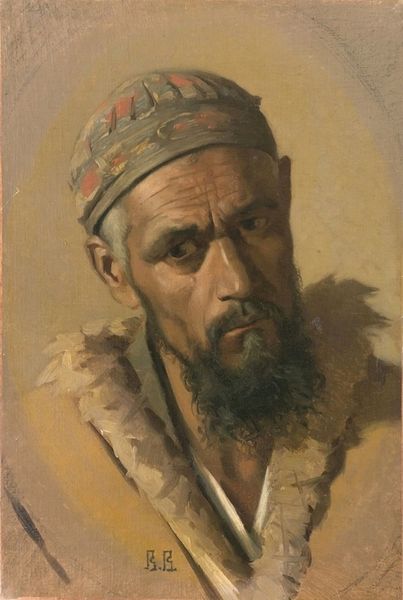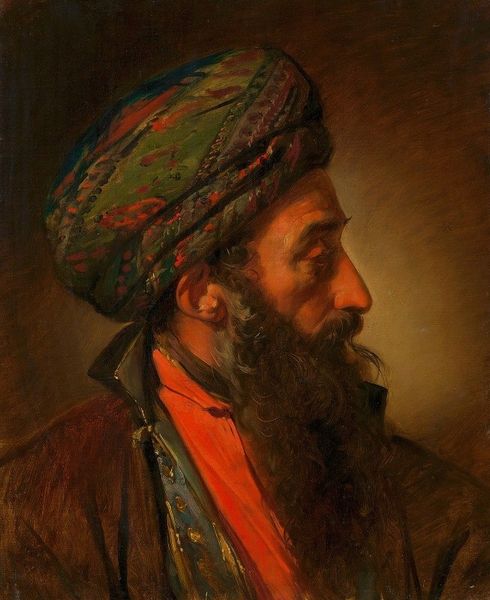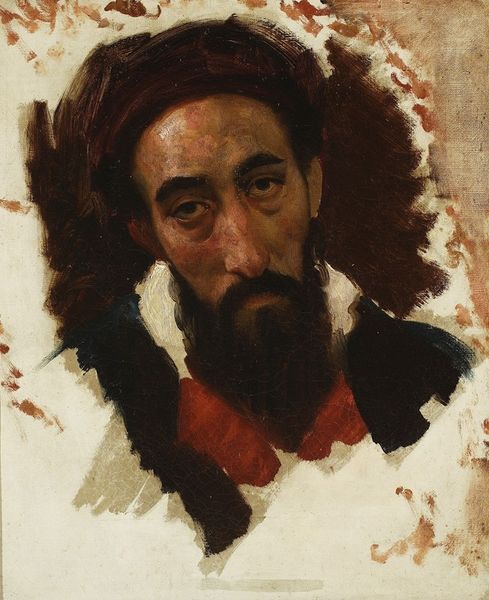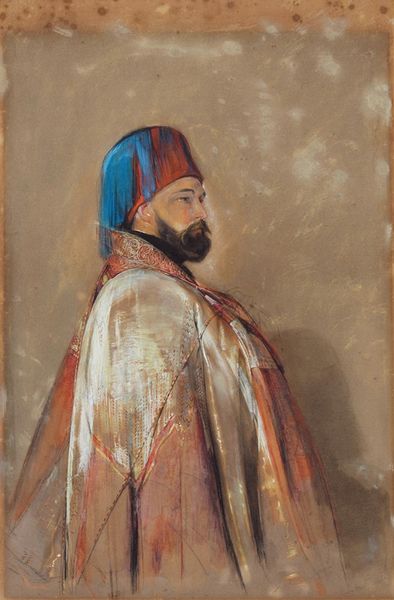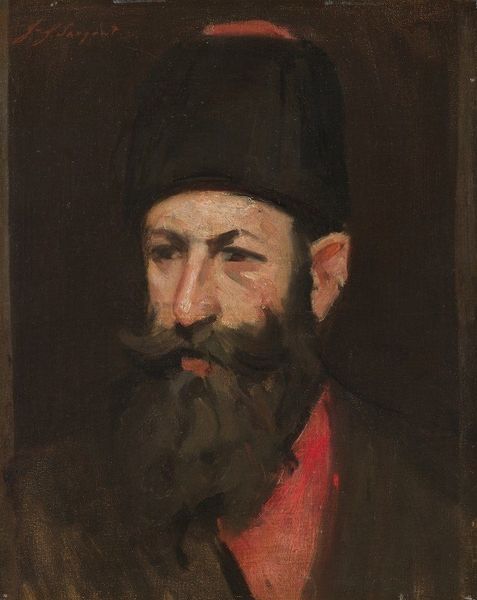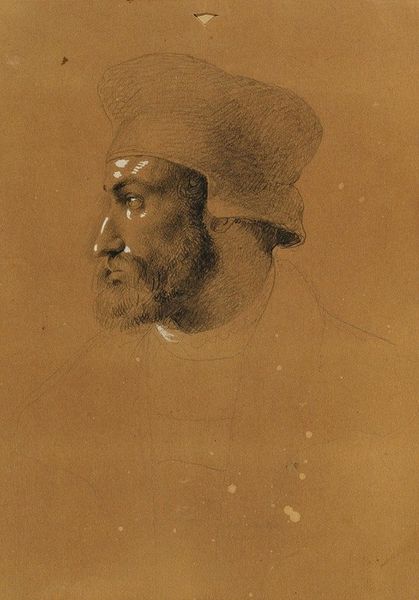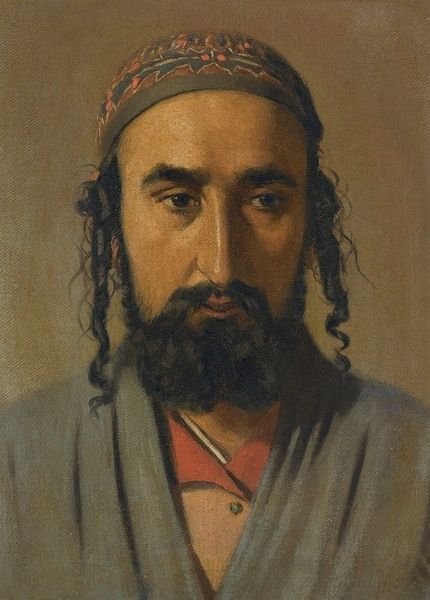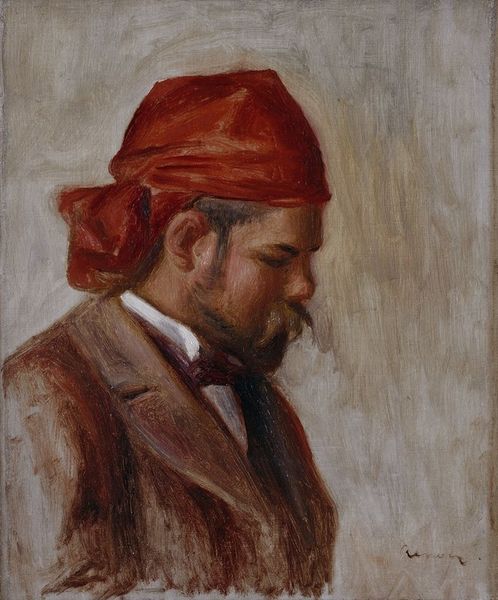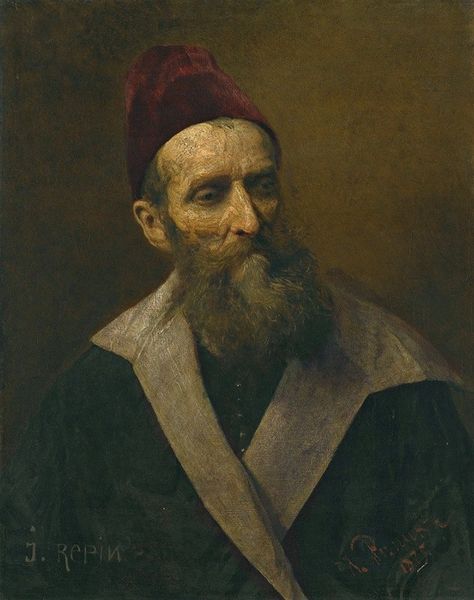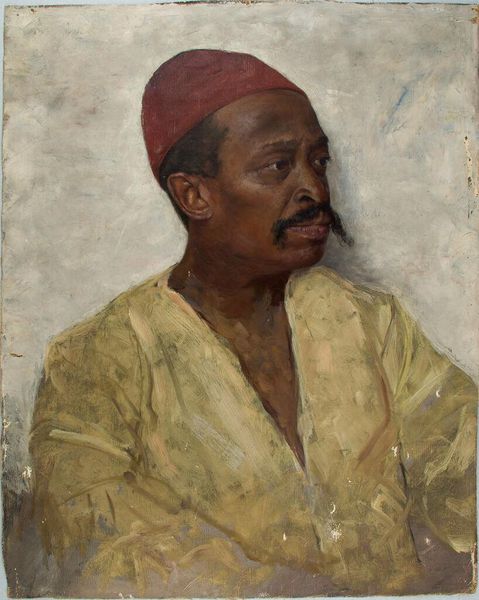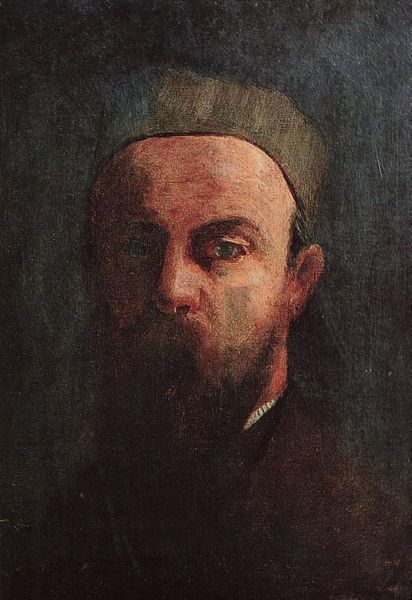
Copyright: Public Domain: Artvee
Editor: Here we have Edwin Lord Weeks’ “Portrait of a Turkish Man,” from around 1892. It's an oil painting and I find the composition so striking, especially the way he’s captured the man’s gaze looking off into the distance. What strikes you most about it? Curator: This work fits squarely into the Orientalist genre, a product of its time, steeped in European colonialism and the Western gaze. Consider the socio-political context. What do you think Weeks was trying to convey to his European audience by depicting this man in this way? Editor: I suppose, looking at it now with that in mind, it seems to play into exoticized stereotypes. Like he's portraying this man as mysterious and 'other.' Is that a fair assessment? Curator: It’s absolutely crucial to recognize that Orientalism, while often celebrated for its aesthetic qualities, frequently perpetuates unequal power dynamics. The depiction often served to reinforce a sense of European superiority by presenting simplified and often fantasized versions of "the Orient.” Does that change how you view the technical skill Weeks exhibits here? Editor: Definitely. It complicates it. It’s beautifully painted, but knowing the history behind it makes me question the artist’s intentions and the impact this image might have had. It makes you wonder about the reception, and who benefited from these representations. Curator: Exactly. It’s vital to question the role art plays in shaping our understanding of different cultures. Even seemingly beautiful artwork can carry a heavy baggage of historical and social biases. I wonder what Turkish audiences made of it? Editor: That’s a really important point – shifting the perspective to consider how different groups might interpret the same artwork. I’ll definitely be thinking about this one differently from now on. Thanks for the insight. Curator: It’s through these kinds of critical dialogues that we can move towards a more nuanced appreciation of art history and its ongoing impact on contemporary society.
Comments
No comments
Be the first to comment and join the conversation on the ultimate creative platform.
